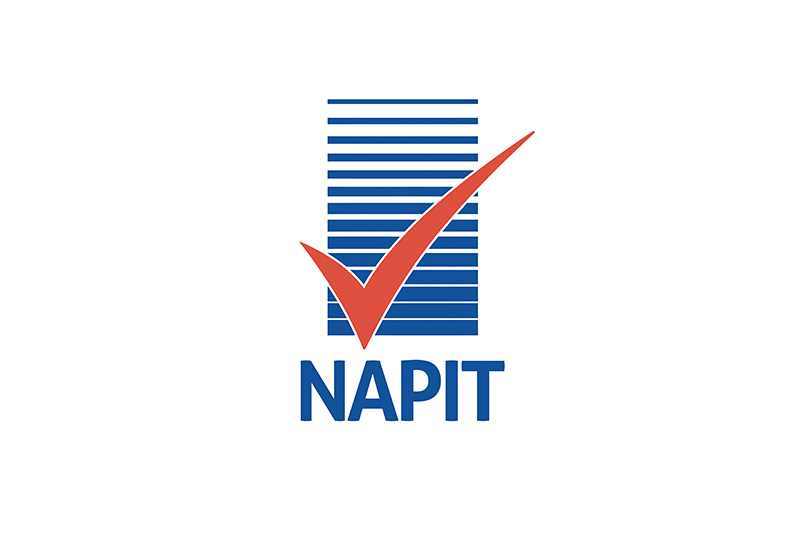
NAPIT’s Bill Allan answers another common contractor query.
Contractors sometimes ask whether it’s necessary to install an RCD in a TT installation before a metal consumer unit (i.e. a ‘front end’ RCD) if all the outgoing sub-main and final circuits are RCD/RCBO protected.
This question is possibly based on a time-honoured practice and we appreciate that such practices can linger long in the mind.
A short history lesson
Traditionally in TT installations, either a non-metallic consumer unit was fitted or, if a metal consumer unit was installed, a separate ‘front-end’ RCD was installed before the metal consumer unit.
Typically, with a split-board consumer unit having one or more 30 mA RCDs for the final circuits, the front-end RCD would be 100 mA, type S (time-delayed) to permit selectivity between RCDs.
However, the cables from the origin of the supply to the input terminals of the RCD were a concern. This was because RCDs don’t protect the cables which supply their input terminals. This means that a line to earth fault on the supply side of the front-end RCD could go undetected.
Where a metal consumer unit is installed, there’s always the risk, however small, that the metal enclosure – and other exposed-conductive-parts – will make contact with a live conductor, causing the metalwork to rise to a potential approaching that of the line voltage of the supply.
The relatively high external earth loop impedance in TT systems might mean that the service cut-out fuse would not operate within the maximum permitted time of five seconds, permitting a dangerously high potential to remain on all the earthed metalwork of the installation.
Consequently, you needed to be sure that any exposed metalwork couldn’t be made live by a fault ‘before’ the RCD, caused either by an insulation fault or by one of the conductors becoming loose.
To address this concern, some manufacturers produced insulating kits for metal consumer units.
BS 7671 Requirements for Electrical Installations
Within the 17th Edition of BS 7671 Regulation 531.4.1 provided the requirements for the installation of a single front-end RCD in TT systems – unless the part of the installation between the origin of the supply and the input terminals of the RCD was protected by the use of Class II equipment (e.g. equipment having supplementary insulation) or equivalent insulation.
In other words, if these cables were adequately protected, there was no requirement for a front-end RCD. Regulation 531.4.1 has been removed from BS 7671:2018.
Amendment 3 of the 17th edition of BS 7671 also introduced Regulation 421.1.201 which required, ‘consumer units and similar switchgear assemblies’ in domestic premises to have steel enclosures or enclosures constructed from non-combustible material and complying with the requirements of Regulation 132.12 regarding accessibility. Regulation 421.1.201 is still in our present version of BS 7671.
Therefore, this requirement for domestic consumer units to have a steel enclosure and how best to minimise the possibility of the steel enclosure ever becoming live, became a challenge for all involved in domestic installations – a challenge which was exacerbated where TT supplies were used.
The consumer’s meter tails
Where the consumer’s meter tails enter a metal consumer unit, there is a risk that one of the tails could become loose or damaged and make contact with the metal enclosure.
To reduce this risk, meter tails must be protected from any mechanical damage or disturbance. This is achieved by using cables which are:
– insulated and sheathed with a non-metallic sheath (i.e. double insulated), adequately supported by cable clips where necessary (see Fig. 1), or
– insulated and contained within an enclosure such as plastic conduit or trunking in a TT system.
The supplier’s tails, although they are part of the supplier’s equipment, should be adequately supported by cable clips where necessary.
Internal cable links
Regulation 531.3.5.3.2.201 requires that, where Class I enclosures are used (that is, earthed metalwork) on TT systems with RCD protection on outgoing circuits, all live conductors on the supply side of the RCD – that is, the internal cable links – must have double or reinforced insulation.
Note 1: to Regulation 531.3.5.3.2.201 draws our attention to the line interconnecting cable links inside the enclosure on the supply side of the RCD. It states that such cables should be insulated and sheathed with a non-metallic sheath or reinforced insulation or be provided with equivalent mechanical protection.
Note 2: to Regulation 531.3.5.3.2.201 states that only interconnecting cables approved by the manufacturer of the enclosure should be used.
Where split consumer units are used with a separate double-pole main switch and 30 mA RCCBs to protect the final circuits, the interconnecting cables which connect the load side of the main switch to the supply side of the RCCBs must be provided with double or reinforced insulation to comply with Regulation 531.3.5.3.2.201.
If this isn’t the case, this particular arrangement wouldn’t be suitable for TT installations because the interconnecting cables wouldn’t be provided with adequate fault protection. If the metal enclosure became live due to a fault, it would cause considerable inconvenience as RCCBs don’t have integral overcurrent protection.
A recommended consumer unit arrangement with RCBOs which is suitable for use on TT installations is shown in Fig. 2.
As each RCBO is supplied by a busbar, the risk of the busbar becoming loose and making contact with the metal enclosure is minimal.
Conclusion
Do you need to install an RCD on a TT installation before a metal consumer unit if all the outgoing sub-main and final circuits are RCD/RCBO protected? The answer is no, subject to the conditions mentioned in this article.
However, this brings up another question: does BS 7671 prohibit the use of a front-end RCD on TT installations which have a metal consumer unit? NAPIT doesn’t believe it does, as long as all the relevant requirements, such as correct selectivity of RCDs, are complied with.
Get more details about NAPIT membership by clicking here










